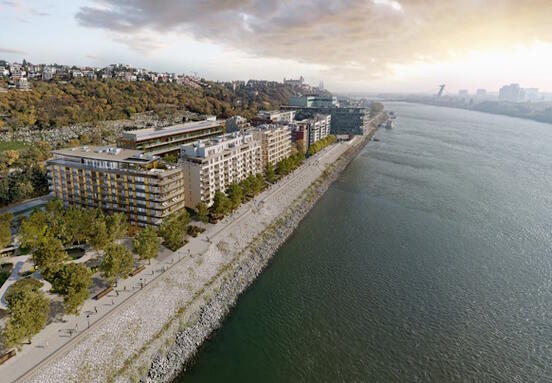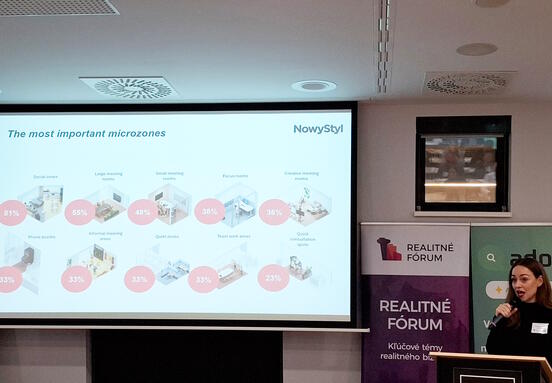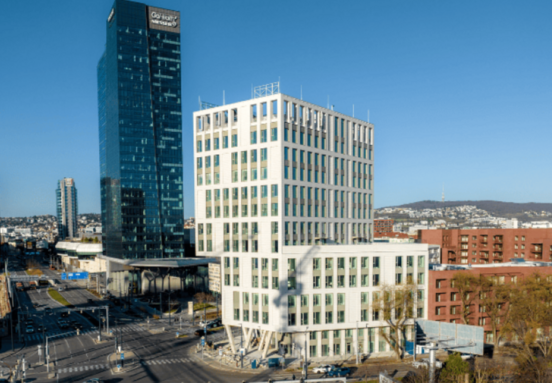Kevin Turpin, Colliers' Regional Director for Capital Markets in Central and Eastern Europe, explains: “In the Central and Eastern Europe region, we register that some investors are returning to a wait-and-see approach before making an investment decision. We have also noticed the suspension or complete cancellation of some rental transactions. Some of them were allegedly related to the participation of Russian companies and others to the uncertainty associated with the war and its physical proximity. At the same time, there are always those who will constantly look for and find opportunities even in the most difficult times. "
The situation in Ukraine has accelerated a trend that has already emerged during the coronavirus pandemic, namely the need to transform supply chains. Ignacio Gomez from Colliers' investment department adds: "Companies want to be closer to their suppliers. This will be reflected in the coming years with several initiatives in the field of near-shoring and re-shoring activities. This offers Slovakia an excellent opportunity to strengthen its importance as a strategic logistics hub in the region of Central and Eastern Europe. "
Andrej Čietek, Director of Colliers' Investment Department, added: this is due to the purchasing power in regions outside Bratislava. In Bratislava, we assume that the increased costs will not affect construction so much, because sales prices are much higher than in other locations in Slovakia. Construction in Bratislava, but also in other cities, may be complicated by failure and limited supply of building materials. "
Despite the disruption of the pandemic, full-year investment volumes for 2021 totaling € 11.07 billion were 6% higher year-on-year, but 20% lower than in the same period in 2019. Colliers originally estimated that year-end volumes for 2022 could reach more than 12.0 billion euros, but this outlook was affected by the war in Ukraine.
Most countries are lagging behind pre-pandemic volumes, but with 57% of volumes in 2021, Poland has reached its five-year pre-pandemic average. Activity has clearly picked up in the last quarter, but some markets are still hampered by a shortage of available products.
We have seen limited high-yield movements in many markets in the region, mainly due to the persistent lack of transaction data to confirm further shifts in some sectors and markets. The exception is the highest achieved logistics revenues, which have increased by an average of almost 100 basis points in the whole of Central and Eastern Europe since the first quarter of 2020, reaching more than 180 basis points in Poland. We remain of the view that there will be further inward shifts in some markets, although the pandemic and the impact of the war in Ukraine are causing inflationary, interest rate and negative economic pressures.
For the first time since 2008, the industrial sector secured first place with a 38% share of 2021. Offices and residential buildings continue to record stable volumes, despite the relative shortage of products available for sale on the market. Retail volumes continue to support assets in the form of retail parks and supermarkets, while volumes in the hotel industry remain limited overall.
Western and Northern European funds accounted for 36% of all transaction volumes in 2021, mainly capital from Germany, the United Kingdom, Austria and Sweden. Capital from Central and Eastern Europe was also strong, with a 32% share of total volumes. Overall, the most active was the capital based in the Czech Republic with a total share of 18%, responsible for 52% of Czech volumes, 68% of Slovak volumes and acquisitions in Poland, Romania, Hungary and Bulgaria.
Due to the geopolitical and health crisis, the global economic outlook remains highly volatile and extremely unpredictable. The current situation is very complex, affecting a wide range of economies and is most likely to worsen during 2022 until it improves. The war in Ukraine and related sanctions, in addition to the pandemic and the factors and disruptions in the ESG, will affect the real estate markets in terms of supply, demand and availability. Not all will be negative, but they will vary from one real estate sector to another. "However, rising inflation and interest rates are being monitored very closely, as they will put an end to the long-standing period of 'low-term rates', which will affect not only debt costs and prices, but also several additional costs for real estate investors, developers, tenants and consumers, ”adds Kevin.
The integration of ESG factors into the decision-making of investors in the real estate segment is becoming increasingly urgent, especially due to the differences in benchmarking and implementation of ESG that occur between individual real estate entities and sectors in the Central and Eastern European region.
Oana Stamatin, Head of ESG Central and Eastern Europe and Romania at Colliers, said: “You have all heard the term uv stuck assets’. Depending on whether you are buying, holding or selling, this concept will make you perceive real estate and transactions significantly differently. The elements that make up the ESG are already very important for investment strategies today and will become increasingly important. Their due diligence review can help investors identify transaction threats, key opportunities to improve ESG after the acquisition, while highlighting low standards and identifying regulatory accountability. ”







